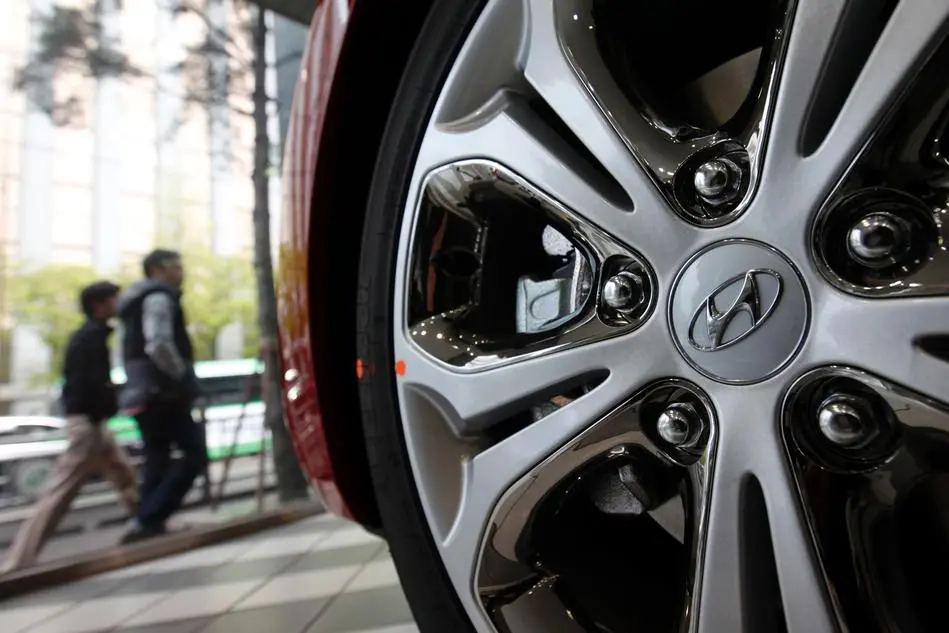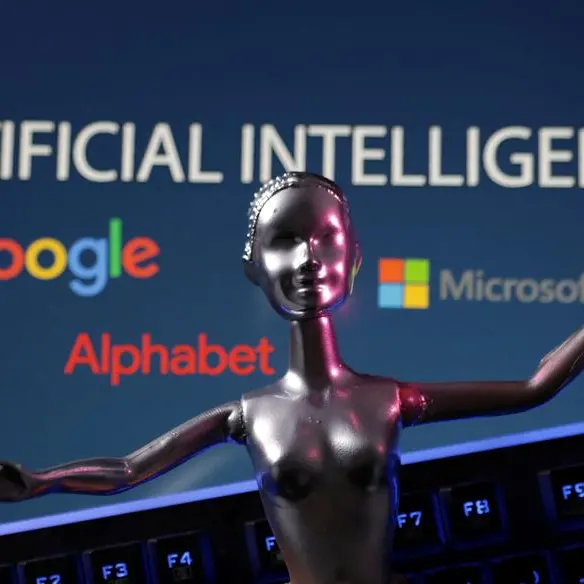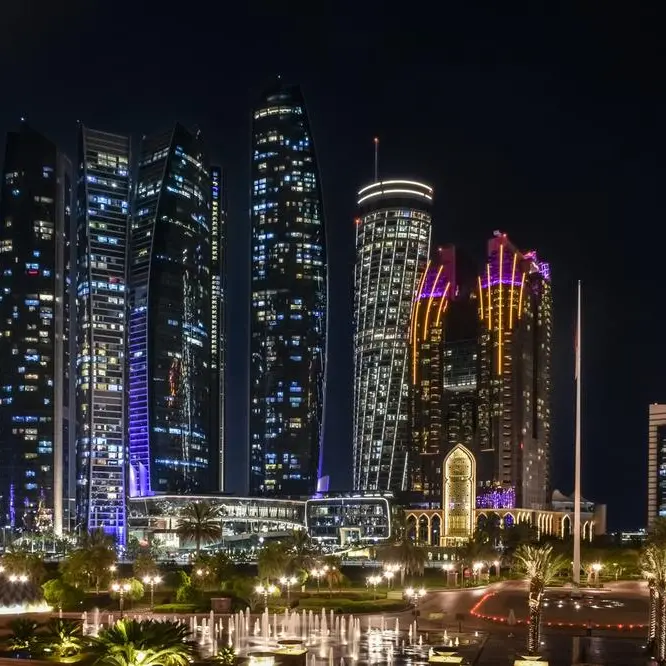PHOTO
12 January 2017
A wave of advanced automotive technology will soon make itself felt on Saudi Arabia’s roads, said Zayong Koo, Hyundai’s vice president of global corporate communications and investor relations.
Speaking during a visit to Riyadh, the senior executive said that the Korean carmaker was committed to bringing advances in driverless vehicles and alternative power sources into the mass-market.
Koo said these next-generation technologies were part of Hyundai’s immediate model plans for the region, and were already appearing on showroom models.
“Hyundai is an industry leader not only in research and development, but also in making sure the ideas we create are applied to the cars our customers can buy,” he said.
“It is only by introducing new technologies to as many cars as possible, as soon as possible, that we can truly feel their benefits.”
Koo was in Riyadh as part of a three-day tour to the GCC, accompanied by Hyundai’s Head of Exterior Design Min-chul Koo. The officials held meetings with distributors in Saudi Arabia and the United Arab Emirates (UAE).
He said that regional model launches planned for early 2017, the all-new versions of the Azera and i30, would include the latest technical innovations.
Both the i30 and Azera will feature Hyundai’s “Smart Sense” systems, including Autonomous Emergency Braking, Smart Cruise Control, Lane Keeping Assist System, Driver Attention Alert and Blind Spot Detection. These are on top of connectivity features, such as Apple CarPlay, Android Auto, and wireless charging to enhance smartphone operation and functionality while driving.
“The next generation of Hyundai models will further challenge many people’s perceptions of the Hyundai brand in the Middle East,” said Mike Song, Hyundai’s head of operations for Africa and the Middle East. “People recognize Hyundai for quality and for value, but do not realize how much the company is investing in design and engineering, and in completely new ways of thinking. Where Hyundai leads, others will be forced to follow.”
Each element of Hyundai’s research and development program is focused on technology that can be made relevant to production vehicles in mass-market segments.
In a recent concept vehicle based on the Hyundai Ioniq eco-car, Hyundai engineers integrated existing driver assistance features with 3D LiDAR sensors to create a self-driving car.
Combined with the development of Hyundai’s own autonomous vehicle operating system, which aims to use significantly less computing power, they are designing a low-cost driverless platform that can be installed in future Hyundai models the average consumer can afford.
“These are not just stand-alone features, but rather part of an all-encompassing, integrated approach to technology,” said Koo. “We plan to commercialize autonomous vehicles by 2020. Each of the advanced driver assistance features we introduce is part of that project, applied to today’s vehicles. Connectivity — the technology that allows different systems inside and outside the car to communicate — brings all of these elements together.”
Min-chul Koo, Hyundai chief designer, said that new models would also feature the next evolution of Hyundai’s distinctive “Fluidic Sculpture” design language, which has provided the brand with a strong and consistent identity. Enhancements include a new “face” for the brand, with the roll-out of a signature “Cascading Grille,” which Koo says is styled to resemble molten metal flowing from a furnace.
“We do not want to look like other cars,” said Koo. “We want every model to look clearly like a Hyundai. Design is a deciding factor for most people when they buy a new car, and that will always be the case. No matter how much the technology changes, excellence in engineering must always be matched by a beautiful design. As we develop our identity we are finding new ways of expressing the elements that signify our brand.”
The year 2016 has been a milestone for Hyundai’s work to establish itself as one of the motor industry’s leading innovators, with the launch of its Ioniq eco-car a significant step forward in moves toward environmentally sustainable transport.
The Ioniq is the world’s first car to offer buyers a choice of three of the most widely accepted alternative drivetrains — hybrid, plug-in, and electric — within a single body type. The flexible approach has received international praise and an overwhelmingly positive customer response in Europe, one of the first global markets to receive the model. German car magazine “Auto Bild” has rated the Ioniq as being significantly better than its main rival, the Toyota Prius, across a range of benchmarks in an extensive side-by-side test.
A wave of advanced automotive technology will soon make itself felt on Saudi Arabia’s roads, said Zayong Koo, Hyundai’s vice president of global corporate communications and investor relations.
Speaking during a visit to Riyadh, the senior executive said that the Korean carmaker was committed to bringing advances in driverless vehicles and alternative power sources into the mass-market.
Koo said these next-generation technologies were part of Hyundai’s immediate model plans for the region, and were already appearing on showroom models.
“Hyundai is an industry leader not only in research and development, but also in making sure the ideas we create are applied to the cars our customers can buy,” he said.
“It is only by introducing new technologies to as many cars as possible, as soon as possible, that we can truly feel their benefits.”
Koo was in Riyadh as part of a three-day tour to the GCC, accompanied by Hyundai’s Head of Exterior Design Min-chul Koo. The officials held meetings with distributors in Saudi Arabia and the United Arab Emirates (UAE).
He said that regional model launches planned for early 2017, the all-new versions of the Azera and i30, would include the latest technical innovations.
Both the i30 and Azera will feature Hyundai’s “Smart Sense” systems, including Autonomous Emergency Braking, Smart Cruise Control, Lane Keeping Assist System, Driver Attention Alert and Blind Spot Detection. These are on top of connectivity features, such as Apple CarPlay, Android Auto, and wireless charging to enhance smartphone operation and functionality while driving.
“The next generation of Hyundai models will further challenge many people’s perceptions of the Hyundai brand in the Middle East,” said Mike Song, Hyundai’s head of operations for Africa and the Middle East. “People recognize Hyundai for quality and for value, but do not realize how much the company is investing in design and engineering, and in completely new ways of thinking. Where Hyundai leads, others will be forced to follow.”
Each element of Hyundai’s research and development program is focused on technology that can be made relevant to production vehicles in mass-market segments.
In a recent concept vehicle based on the Hyundai Ioniq eco-car, Hyundai engineers integrated existing driver assistance features with 3D LiDAR sensors to create a self-driving car.
Combined with the development of Hyundai’s own autonomous vehicle operating system, which aims to use significantly less computing power, they are designing a low-cost driverless platform that can be installed in future Hyundai models the average consumer can afford.
“These are not just stand-alone features, but rather part of an all-encompassing, integrated approach to technology,” said Koo. “We plan to commercialize autonomous vehicles by 2020. Each of the advanced driver assistance features we introduce is part of that project, applied to today’s vehicles. Connectivity — the technology that allows different systems inside and outside the car to communicate — brings all of these elements together.”
Min-chul Koo, Hyundai chief designer, said that new models would also feature the next evolution of Hyundai’s distinctive “Fluidic Sculpture” design language, which has provided the brand with a strong and consistent identity. Enhancements include a new “face” for the brand, with the roll-out of a signature “Cascading Grille,” which Koo says is styled to resemble molten metal flowing from a furnace.
“We do not want to look like other cars,” said Koo. “We want every model to look clearly like a Hyundai. Design is a deciding factor for most people when they buy a new car, and that will always be the case. No matter how much the technology changes, excellence in engineering must always be matched by a beautiful design. As we develop our identity we are finding new ways of expressing the elements that signify our brand.”
The year 2016 has been a milestone for Hyundai’s work to establish itself as one of the motor industry’s leading innovators, with the launch of its Ioniq eco-car a significant step forward in moves toward environmentally sustainable transport.
The Ioniq is the world’s first car to offer buyers a choice of three of the most widely accepted alternative drivetrains — hybrid, plug-in, and electric — within a single body type. The flexible approach has received international praise and an overwhelmingly positive customer response in Europe, one of the first global markets to receive the model. German car magazine “Auto Bild” has rated the Ioniq as being significantly better than its main rival, the Toyota Prius, across a range of benchmarks in an extensive side-by-side test.
© Arab News 2017












